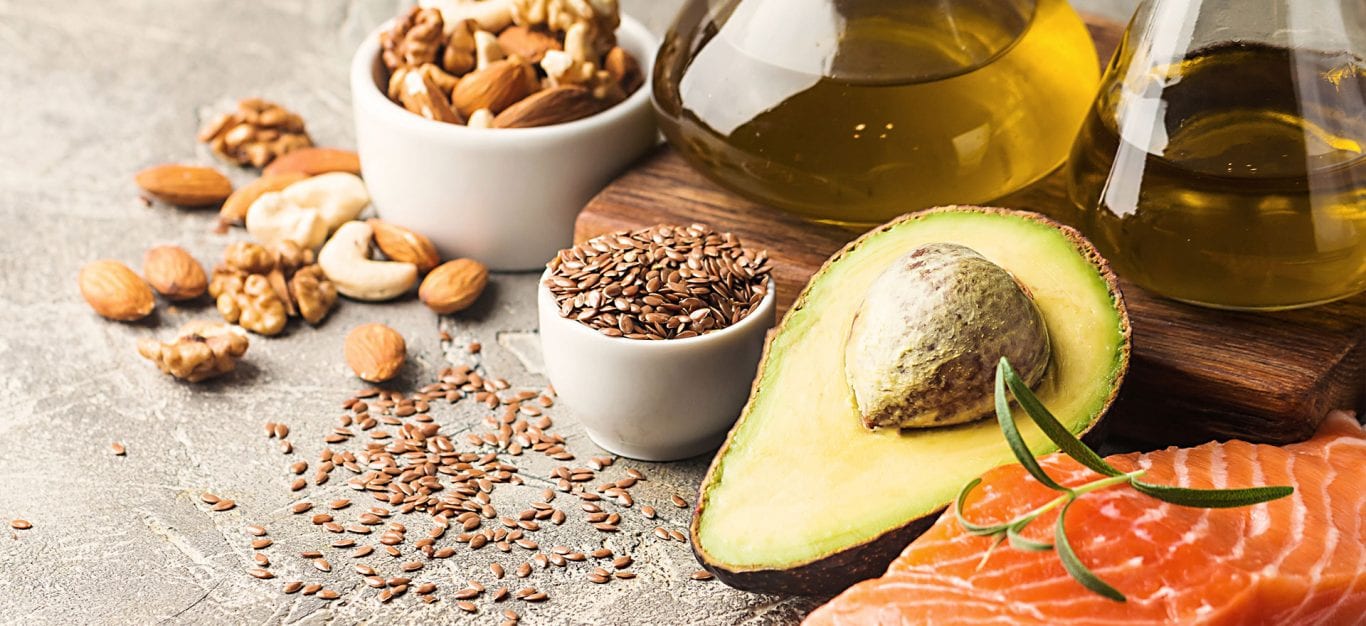Fats: Which ones can you eat?
We all need a certain amount of fat in our diet. But what’s the right kind?

Without fat, we would miss out on a valuable source of energy for the body, as well as other important functions including moving nutrients around the body, building cells and the absorption of fat-soluble vitamins A, D and E and K.
But it’s important to know how much of it to include in our diet. Nutritionists agree that eating the right amount of the right type of fats is just as important as the total amount we eat.
Different kinds of fat
There are three main types of fat: saturated, polyunsaturated and monounsaturated. We have all three in our diets, but because some are better for us than others, it’s important to be aware of the amount of each type of fat you are eating.
Unsaturated fats
There are two types of these: polyunsaturated and monounsaturated fat. Replacing saturated fats with polyunsaturated and monounsaturated fats helps lower LDL-cholesterol. These types of fats are usually found in plant-based foods like vegetable oils, seeds and nuts.
Monounsaturated fats
Are most commonly found in olives, nuts, avocados, olive oil, rapeseed oil, groundnut oil and spreads made from them.
Polyunsaturated fats
Provide us with the ‘essential’ fatty acids that the body needs to function normally. Essential fatty acids must be provided by the diet since the body cannot generate these alone. These are collectively known as omega-3 and omega-6 fats and have been shown to help maintain healthy cholesterol levels.
Omega-6 polyunsaturated fats
Also called ‘omega-6 polyunsaturates’, are mainly found in plant-based oils, such as vegetable oils and those made from seeds (like sesame oil) and nuts (like almond oil).
Omega-3 polyunsaturated fats
Also called omega-3 polyunsaturates, have now been shown to be particularly important in heart health, especially the long-chain omega-3 fatty acids present in oily fish. One way these fatty acids are thought to provide benefit is by helping the body to regulate blood cholesterol levels, which can help to prevent heart disease. Eating one portion of oily fish per week will provide the recommended level of omega-3 polyunsatures in the diet.
Saturated fats
Are normally naturally hard at room temperature and are found in the greatest quantities in animal products (such as dairy), meats, and manufactured goods (such as cakes, biscuits and pies). Eaten in excess, saturated fats have been associated with raised levels of ‘bad’ LDL-cholesterol in the blood – one of the main contributors to heart disease.
Trans fats
Occur naturally in very small amounts in foods such as meat and dairy products, but are also formed when liquid oils are hydrogenated to make them solid. It is best to avoid trans fats wherever possible as they have been linked to poorer health. Like saturated fats, trans fats can raise cholesterol levels in the blood.
Key tips:
- Eat at least two portions of fish per week, one of which should be oily (choose from salmon, mackerel, sardines, pilchards or herring)
- Use lower fat versions of dairy products, e.g. semi-skimmed or skimmed milk, reduced fat cheese, or use less of the full fat products
- Choose leaner meats (e.g. chicken and turkey) and remove visible fat and skin where possible
- Swap some vegetables or pulses for meat in your cooking
- Use less fat in cooking and use low fat spreads on toast and sandwiches
- Grill, steam, boil and bake foods instead of frying or roasting
- Check food labels to work out if a food is high or low in fat: high is more than 20g fat per 100g – low is 3g fat or less per 100g
